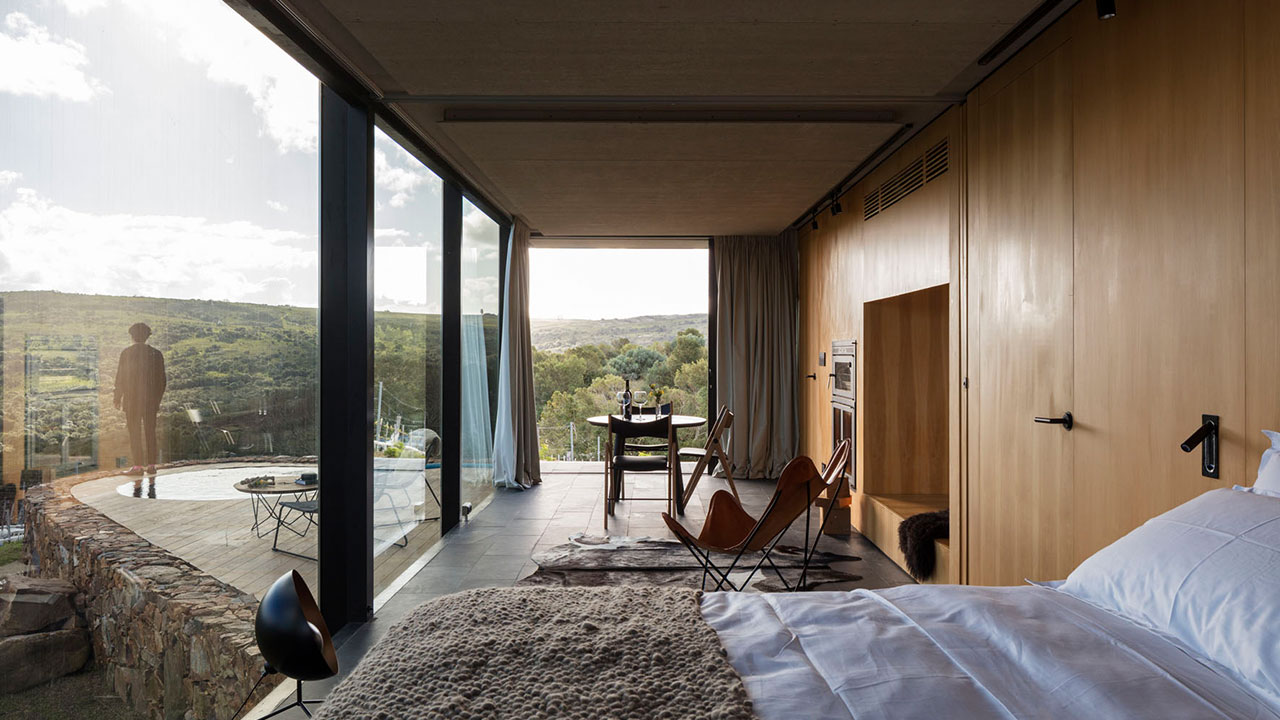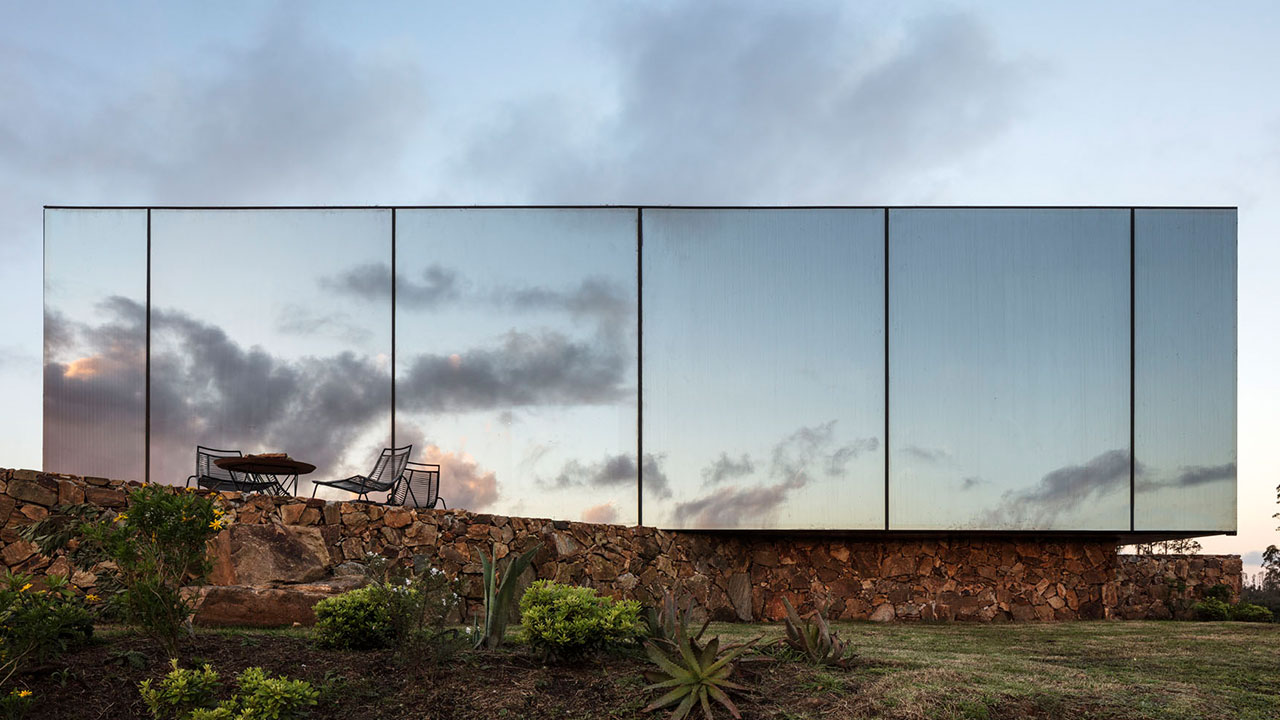Everything

That the Sacromonte Landscape Hotel even exists in its adopted home is entirely impressive. It took 13 semi-trailers to deliver the hotel’s fully assembled cabins to a vineyard in the hills of Maldonado. Each truck travelled more than 200 kilometres from the Uruguayan capital of Montevideo, where the cabins were carefully pre-fabricated. Cranes then lifted the installations onto an existing base of stone and timber hedging, finally settling them into their new home. Sacromonte is part hotel, part winery and all modern luxury. It’s set to open in late 2018 and, while the landscape appears to resemble traditional Tuscany, it’s actually in the verdant southeastern tip of compact Uruguay.
But the genuine originality of this hotel is not limited to its beginnings. The team from MAPA, a Uruguayan and Brazilian-based architectural consultancy, has created a set of individual villas that take design cues from Philip Johnson’s 1949 Glass House in Connecticut. Each cubic cabin features a radical mirrored frontage, an effect designed to mask the appearance of a man-made structure and instead reflect the rugged vegetation of the rolling vineyard surrounds. Grassed roofing blends the cabins into the lush hills, while when viewed from behind, piled timber appears as a tidy stack of chopped firewood. This is a property that goes to great lengths to camouflage itself from view.
From the inside, the mirrored wall becomes floor-to-ceiling glass; the one-way view meaning guests can be immersed in the landscape without sacrificing privacy. The so-called “cabins” are in no way the abode of a traditional winery stay. These are stellar design structures, boldly radical in their concept and execution, that would be at home in the awards edition of any respected interiors tome. And most likely will be.
Interiors are minimalist in appearance, sustainable in construction and comfortably chic, the pared-back aesthetic keeping focus firmly on landscape. Cow-hide floor throws adorn stone floors, simple dining areas are warmed by wood-burning stoves, and Argentinian-designed leather butterfly chairs are positioned to drink in the views of the vines, streams and rolling hills.
The verdant valley of Maldonado that exists beside and beyond the windows of Sacromonte makes for tranquil contemplation, either from the comfort of indoors or from the 13 cabins’ private balconies. Timber and stone-platformed terraces — complete with sunken circular pools— wrap each villa, their rounded forms in contrast to the strong lines of the cabins yet completely at one with the surrounding topography.
In keeping with the commitment to environmental mindfulness, electric cars are used for the trip from individual digs, which are scattered across Sacromonte’s 100 hectares, to the local-leaning farm-to-table restaurant. At the outdoor terrace and wine store, the range of wines — tannat, merlot and cabernet sauvignon — on which Sacromonte has forged its growing reputation can be enjoyed.
This is far more than a winery getaway. To enjoy the natural treasures of Maldonado from within a piece of artisanal craftsmanship will be memorable to any traveller, design-obsessed or not.
Visit sacromonte.com
THIS ARTICLE APPEARED ORIGINALLY IN THE OCTOBER EDITION OF ICON MAGAZINE.
SUBSCRIBE HERE TO RECEIVE TWO PRINT EDITIONS PER YEAR FOR $15AUD

